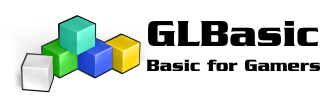Con la salida de la beta "12" parece que se han implementado correctamente todas las mejoras y correcciones de bugs que envié a Gernot, como siempre en mi caso, enfocadas a iOS, especialmente iOS 7 y Xcode 5.
Algunos de los cambios (para quién le pueda interesar) son la corrección del sistema de giro de elementos propios de iOS, es decir: La pantalla de multitarea, las persianas del "Notification Center", la persiana del nuevo "Control Center", y los wrappers... todos ahora deben aparecer y funcionar en la orientación adecuada sin hacer nada, y con esto quiero decir "sin escribir código" para controlar el giro.
Esto no quiere decir que no haya que controlar las rotaciones de las imágenes que queramos mostrar desde GLBasic, necesitaremos SETORIENTATION igualmente, pero sin preocuparnos de la parte de elementos propios de iOS...
Por otro lado, también se respeta el bloqueo de giro que puede usar el usuario, ya sabéis, desde el icono del "candado" en los menús de iOS o en el botón lateral para quién lo tenga configurado. Si el usuario lo activa para bloquearlo, los elementos de iOS no serán girados tampoco desde nuestro programa GLBasic.
En cuanto pueda, publicaré un wrapper para obtener la orientación del dispositivo desde iOS. Algo así como un "GetiOSDeviceOrientation".
Algunos de los cambios (para quién le pueda interesar) son la corrección del sistema de giro de elementos propios de iOS, es decir: La pantalla de multitarea, las persianas del "Notification Center", la persiana del nuevo "Control Center", y los wrappers... todos ahora deben aparecer y funcionar en la orientación adecuada sin hacer nada, y con esto quiero decir "sin escribir código" para controlar el giro.
Esto no quiere decir que no haya que controlar las rotaciones de las imágenes que queramos mostrar desde GLBasic, necesitaremos SETORIENTATION igualmente, pero sin preocuparnos de la parte de elementos propios de iOS...
Por otro lado, también se respeta el bloqueo de giro que puede usar el usuario, ya sabéis, desde el icono del "candado" en los menús de iOS o en el botón lateral para quién lo tenga configurado. Si el usuario lo activa para bloquearlo, los elementos de iOS no serán girados tampoco desde nuestro programa GLBasic.
En cuanto pueda, publicaré un wrapper para obtener la orientación del dispositivo desde iOS. Algo así como un "GetiOSDeviceOrientation".


 , related to a new project that I have to do, and I'm trying to suppose if it is possible to do directly from GLBasic or I need to use some other programming language:
, related to a new project that I have to do, and I'm trying to suppose if it is possible to do directly from GLBasic or I need to use some other programming language:




 also GetiOSMessageBoxValues returns as first parameter the button index pressed in the "alert".
also GetiOSMessageBoxValues returns as first parameter the button index pressed in the "alert". aunque, igual me ha quedado un poco grande
aunque, igual me ha quedado un poco grande  y me pareció que el código que alguien presentó no era muy "definitivo" o correcto del todo...
y me pareció que el código que alguien presentó no era muy "definitivo" o correcto del todo...
